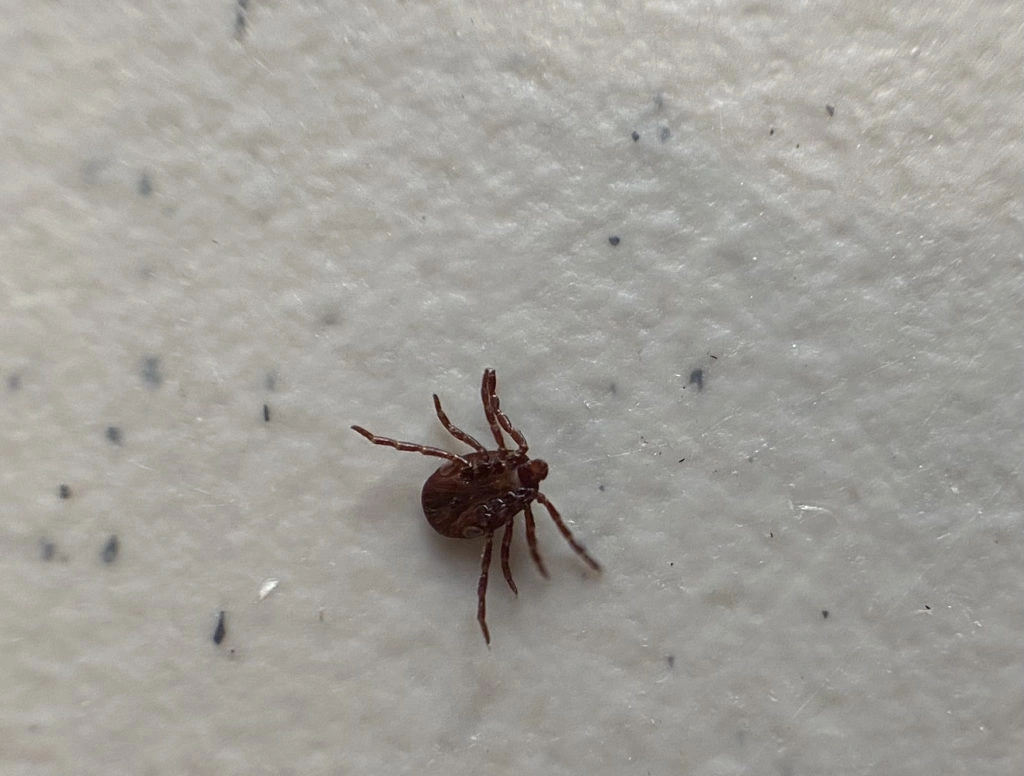Are Ticks Insects?
When we were traveling across the country to see Grandma and Grandpa, we saw a tick wandering across a truck stop picnic table toward my youngest. When he caught sight of it he flipped his lid and went over backwards ranting about me doing my job and killing the bug that was after him. This led to a great discussion, are ticks insects?

Bugs and Insects
A bug is a specific type of insect that has piercing sucking mouthparts. This could be something like a bed bug or a kissing bug that is after a blood meal. Alternatively, it could be a leaf bug that is after the juices of a plant. While there are some similarities here to what we know about ticks, they do not fit this classification.
Classifying Ticks
Ticks are arachnids. They have a capitulum which has their feeding parts and the main part of their body. If you look closely (my son vehemently refused this invitation), you will see 4 pairs of legs like spiders and scorpions have.

Tick Eyes
If you thought my invitation to get close enough to count tick legs was absurd, here is one step further. Check out their eyes! It seems most people assume they either don’t have eyes or the eyes are too small to be seen. Several people that I have asked assume that they are up in front with their mouthparts. On a hard tick, the eyes are on the side by the corners of the dorsal shield. One you se it, the tick transforms into a goofy looking clown with an uncannily large smile going all the way up to the eyes and a dunce cap on.
Soft & Hard Ticks –
Most people are familiar with hard ticks that seem impossible to crush. Hard ticks iinclude:
- Brown Dog Tick
- Rocky Mountain Wood Tick
- Lone Star Tick
- Blacklegged Tick
- Western Black Legged Tick
- American Dog Tick
I find this observational point most entertaining. My oldest will typically begin with several stomps on the tick likely allowing it to mold into the rubber or slip into the tread in luck filled fashion. After that, he tends to go right for the hammer to finish the tick off. In addition to hard ticks, there are the soft ticks such as:
- Fowl ticks
- Pigeon Ticks
- Relapsing Fever Ticks
Call it what you like
While I love to get technical with my children to get under their skin, we won’t get overly technical with you here at Rove Pest Control. Are ticks insects? No but who really cares? We are far more concerned about protecting your health and well being. Whether you want to call them bugs, ticks, arachnids, or little demons from the fiery depths of hell, reach out to us and get a plan in place before ticks get under your skin.
About Rob Greer: Pest Control Expert and Industry Leader
Rob Greer, co-founder of Rove Pest Control, has a deep connection with nature, developed during his upbringing in rural Idaho where he raised horses and cattle. He began his career in pest control in 2001 to support his university studies. After earning a BS in Business Management, Rob, along with Lenny Gray and McKay Bodily, founded Rove Pest Control.
Rob has played a pivotal role in shaping the operational framework of Rove Pest Control, with a focus on personal development for team members, public health awareness, and tailoring services to meet the needs of individuals and communities.
As an Associate Certified Entomologist (ACE) and Subject Matter Expert (SME), Rob has made significant contributions to the pest control industry. He has collaborated on the Minnesota Department of Agriculture’s UMN Extension certification manual and exam development, the National Pesticide Applicator Certification Core Manual for the EPA, and the Quality Pro Customer Service Credential Task Force. His expertise has also been recognized in his testimony for the pest control industry before the Minnesota state legislature as a State Policy Affairs Representative. Currently, Rob serves as the President of the Minnesota Pest Management Association Board. Learn more about about Rob Greer.
